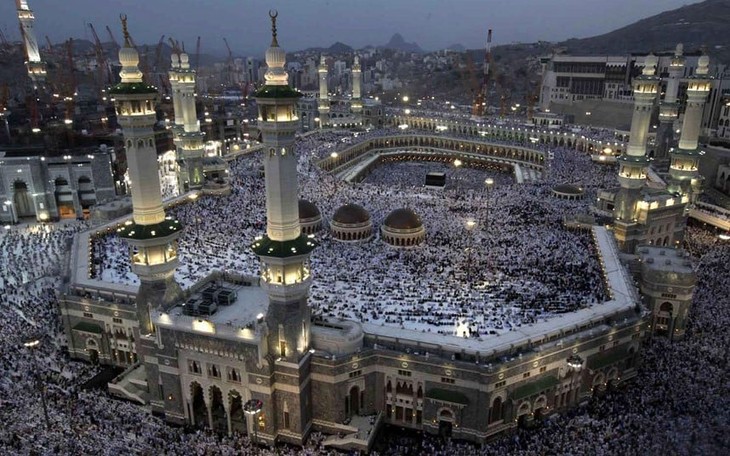(VOVworld) – Major rituals of the Haji, the annual Islamic pilgrimage to Mecca, Saudi Arabia, are underway at the Grand Mosque. During the six-day Haji, which began on September 10, security is tightened to prevent the recurrence of last year’s stampede.
 |
Millions of pilgrims have arrived in Mecca for the Hajj (Photo: telegraph.co.uk)
|
Every year, about two million Muslim pilgrims from all over the world gather in Mecca, Saudi Arabia. This is a mandatory religious duty for Muslims to be accomplished at least once their lifetime because they believe that attending the Haji helps their souls to be reborn. There have been many stampedes and fires due to the massive influx of pilgrims. Nearly 2,300 pilgrims were killed by stampede in Mecca last year, the largest number of casualties since 1990 and the second biggest tragedy in the history of the Haji. In 1990, 1,400 people, mostly from Asia, died in a tunnel of Mina area when the tunnel’s ventilation system broke down.
This year, Saudi Arabian authorities have taken various safety measures, including providing electronic identification bracelets to foreign worshipers. Each bracelet contains personal data, including the pilgrim's identity, nationality, and place of lodging in Mecca. For the first time in nearly three decades, Iran has not sent pilgrims to religious gathering because Iran and Saudi Arabia failed to reach agreements on the pilgrimage. Iran demands Saudi Arabia be held accountable for last year’s stampede and clarify the causes of the tragedy.
The two countries, which do not have diplomatic relations, remain different in a wide range issues, including conflicts in Yemen and Syria.
The Hajj or pilgrimage to Mecca is one of the five pillars of Islam, in addition to testimony of faith to Allah, five prayers a day, support of the needy, and fasting during the month of Ramadan.